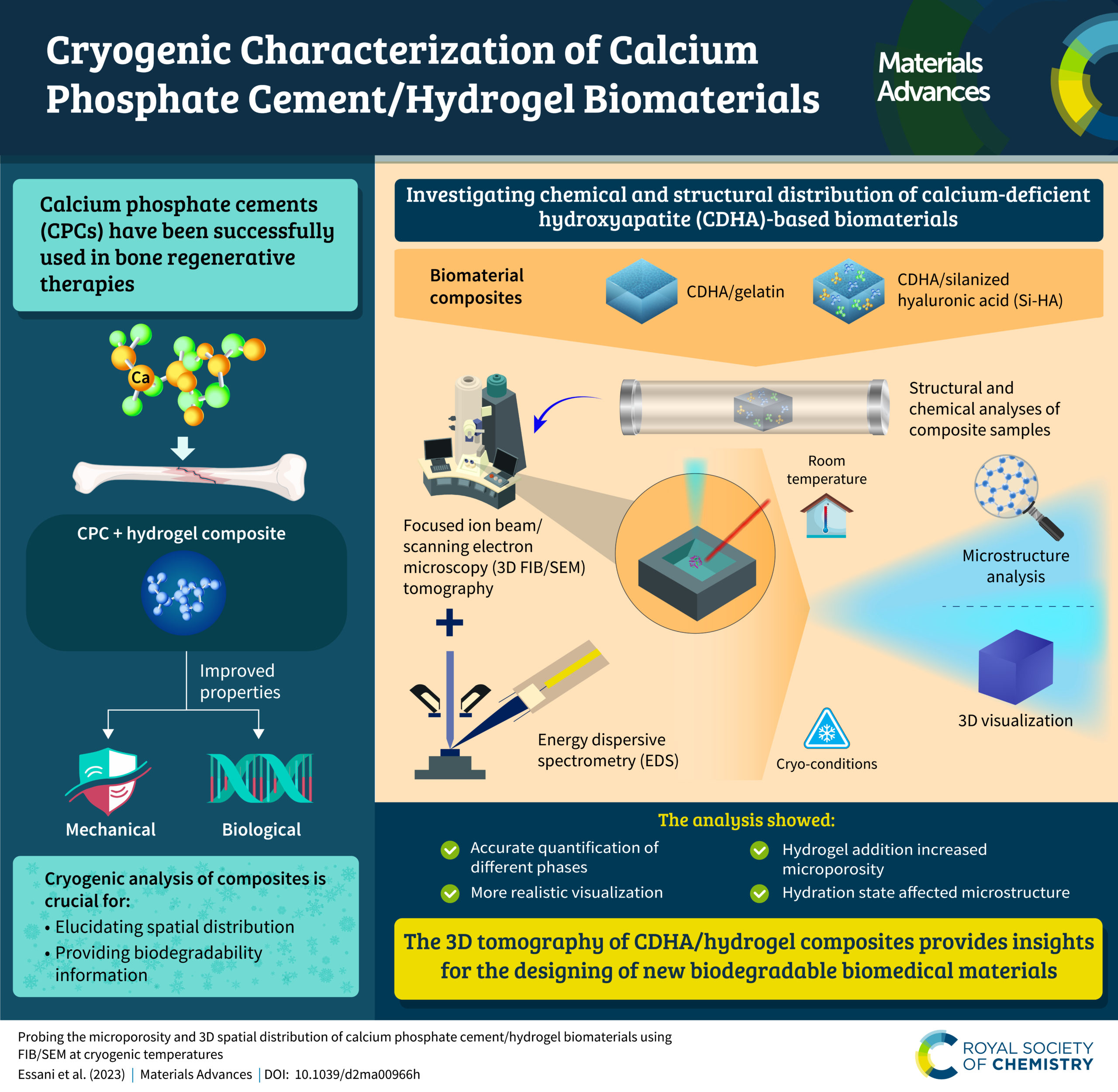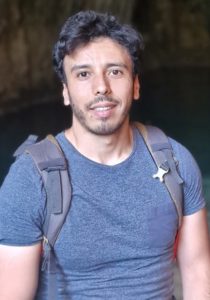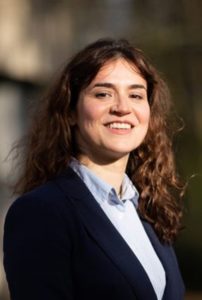Mouad Essani, Baptiste Charbonnier, Nicolas Stephant, Hilel Moussi, Pierre Weiss, Jean Le Bideau and Patricia Abellan
Mater. Adv., 2023,4, 2474-2486 DOI: D2MA00966H
Meet the authors
Mouad Essani received his Ph.D. in physics and analytical chemistry from Sorbonne University in Paris in 2020, where he worked on the characterization of uranium microparticles in the French Alternative Energies and Atomic Energy Commission. His thesis work was mainly focused on the combined use of electron microscopy, X-ray spectroscopy and Monte-Carlo simulation to investigate both the microstructure and elementary composition of powder used in nuclear fuels. In 2021, he was a postdoctoral Fellow at the Institute of materials Jean Rouxel in Nantes under the supervision of Dr. Patricia Abellan. During his postdoc, he investigated the behaviour of synthetic bone substitutes using cryo-electron microscopy. He is currently a research engineer in the University of Paris-Est-Creteil where he applies electron microscopy to study atmospheric particles, aerosols and their impact on the environment.
Patricia Abellan joined the Institute of Materials of Nantes (IMN at Nantes University) with a Junior Talent chair of excellence in 2019 and got tenured as a CNRS research scientist in 2020. She received her BSc in Physics from the Aalborg University (Denmark) and her Ph.D. in Materials Sciences from the Autonomous University of Barcelona and Institute of Materials Science of Barcelona (ICMAB-CSIC), Spain, in 2011. She has held postdoctoral positions at the University of California – Davis and at the Pacific Northwest National Laboratory, USA, before taking a staff research scientist position at the SuperSTEM Laboratory (Daresbury, UK) in 2015. Her research focuses on the study of solid-liquid interfaces on hybrid and biomaterials using electron microscopy as well as on the elucidation of the radiation chemistry and radiation physics driving the processes at liquid-solid interfaces induced by the electron beam in an electron microscope.
An interview with the authors
What aspect of your work are you most excited about at the moment and what do you find most challenging about your research?
I believe that I am particularly excited about the application of electron microscopy and spectroscopy tools to investigate atmospheric particles. I find topics related to this field both very challenging and interesting. Studying the impact of such particles on the environment constitutes an important aspect for our ecosystem.
How do you feel about Materials Advances as a place to publish research on this topic?
I believe that environment friendly processes request the development of materials that have lower impact on the environment. These materials should be investigated in terms of their chemistry, microstructure, etc. I think that research in that field fits perfectly within the scope of Materials Advances.
Can you share one piece of career-related advice or wisdom with other, early career scientists?
I consider myself as an early career scientist so I don’t think I can provide much wisdom. The only advice I can give is to never abandon ideas (in research of in life in general) that we believe in.













